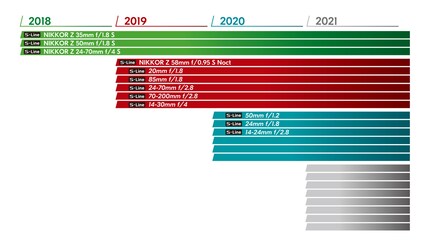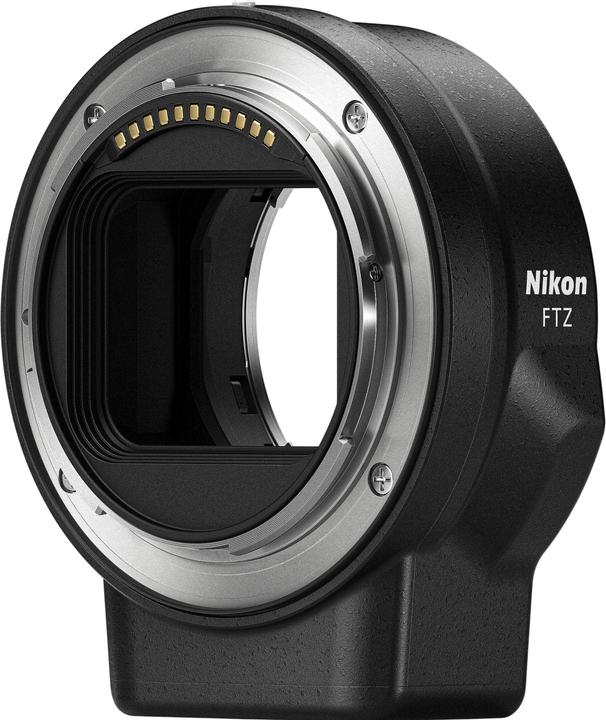
The new Nikon Z camera system arrives at the end of September
Nikon invited me to Cologne so that I could have a look at the new mirrorless system. Which I would have been able to do had the flight not been cancelled at the last minute. But because we're so flexible, we've packed it all in for you, videos included.
After many rumours and leaks, we now have the lowdown: Nikon has announced a new mirrorless camera system for the end of September. After the flop of the Nikon system with a small sensor, the traditional brand is now banking on a full-frame system. Until now, only Sony and Leica have offered a full-format mirrorless.
Yesterday I should have gone to Cologne: Nikon invited me to see its new cameras and lenses. But the airline cancelled my flight an hour before departure. So we shot the video hastily and very improvisedly this morning in Zurich: Nikon Switzerland managed to find us a test camera at short notice. As the camera isn't quite final yet, I'm not allowed to publish test photos.
New Z-mount allows for better lenses
Nikon has taken advantage of this system change to increase the diameter of the lens aperture (mount) from 44mm to 55mm. With the very short 16mm aperture, it is now possible to attach lenses with very high optical performance and therefore very high light intensity. Nikon has already announced a 58mm lens with f/0.95 light intensity for next year.
The cameras: Nikon Z6 and Z7
The first camera in the system will be the Z7, which should be available by the end of September. The Z6 will follow two months later. The look of the two cameras is exactly the same, but the inside is different. The Z7 has a 45-megapixel sensor, the Z6 a 24-megapixel sensor, making the Z6 more suitable for low-light photos, action shots and videos. Its light sensitivity is slightly higher (up to ISO 51200 compared with ISO 25600 for the Z7) and its burst mode speed is slightly higher (12 compared with 9). But both cameras are versatile. The Z7 is also faster and has more autofocus points. It's simply the better model and the one that costs more.
As expected, both cameras are significantly smaller than full-frame SLRs, but they still have a great grip thanks to the suitably large grip. The lenses are also mounted more compactly with the new system, which can be seen very clearly in the video with the direct comparison of 24-70mm lenses.
The Z6 and Z7 are "completely" sealed against dust and moisture, so they, according to Nikon, meet professional requirements. The OLED electronic viewfinder features 3.68 megapixels, colour matching and eleven levels of automatic and manual brightness control. Cameras can automatically switch between monitor and viewfinder.
The design with buttons and dials feels more organised than SLR cameras. Some elements are missing, but I don't think they've really disappeared. For example, the Drive mode dial (self-timer, burst, etc.) is no longer needed, as mirrorless cameras no longer require certain modes (Mup, silent).
The housing is equipped with the following control elements:
- a fold-out touch-sensitive LCD screen (3.2 inches)
- a small control screen on the top
- two thumbwheels and a mode selector
- a mini joystick
- control panel with OK button
- two function keys on the front panel
- various other keys
The menu structure is the same as Nikon users are used to.
Accessories: high compatibility
According to Nikon, the flash units are fully compatible, as is the WT-7 wireless LAN transmitter. The D850's battery (EN-EL15a) is also compatible with the Z6 and Z7. Please note: SD cards will not work. The cameras have only one slot for reading XQD and the future CFX memory card format. A power grip is under development.
Video function: not bad at all
Both housings are equipped with a headphone and microphone connection. Full HD is possible with 120p, UHD with 30p at full field width; in addition, the camera allows slow-motion filming in 4K. Important for video producers: 10-bit N-log for professional colour matching.
Three lenses, one adapter and great shots
For starters, Nikon is launching three lenses for the Z system:
You can see the exact specifications by clicking on the products. The 24-70 is remarkably compact. The 50mm lens is due out a little later, towards the end of October. All of these lenses should be sharper than comparable F-mount lenses, due to the shorter drawdown and larger diameter.
It is of course very important that as wide a range of lenses as possible is brought to market as quickly as possible. According to Nikon's roadmap, six more lenses will be available for the Z system by the end of 2019 at the latest, including a 70-200 f/2.8 telephoto lens and an 85mm with f/1.8.

Also very important at the outset: a powerful adapter for the wide range of F-mount lenses. In principle, you can use a lens from 1959 with a Nikon camera of today. This is a remarkable achievement that the manufacturer should be banking on.
According to Nikon, with the adapter you have no loss of functionality, at least not with the new half-new lenses (AF-S and AF-P type). Autofocus is not unlimited and electronics co-ordinate image stabilisation of the sensor and lens.
First (superficial) assessment
I get the impression that Nikon is marketing a very solid, well thought-out and already mature system here. The authenticity of this claim will then be verified in more detail in the tests. I would have liked to have had a tele (200 or 300 millimetre) from the start, but if the adaptor is as good as claimed, you don't necessarily need it.
For Nikon, this launch is a big step forward that was more than necessary. While all the cameras and lenses are of excellent quality, the question remains whether this will be enough to prevail against the tough competition, particularly from Sony. The larger diameter of the mount is certainly a significant competitive advantage, but one that may not outweigh other factors such as price and pace of innovation.
How do you assess the situation? Will you be tempted? Give us your opinion in the comments section at the bottom of the page!
My interest in IT and writing landed me in tech journalism early on (2000). I want to know how we can use technology without being used. Outside of the office, I’m a keen musician who makes up for lacking talent with excessive enthusiasm.

